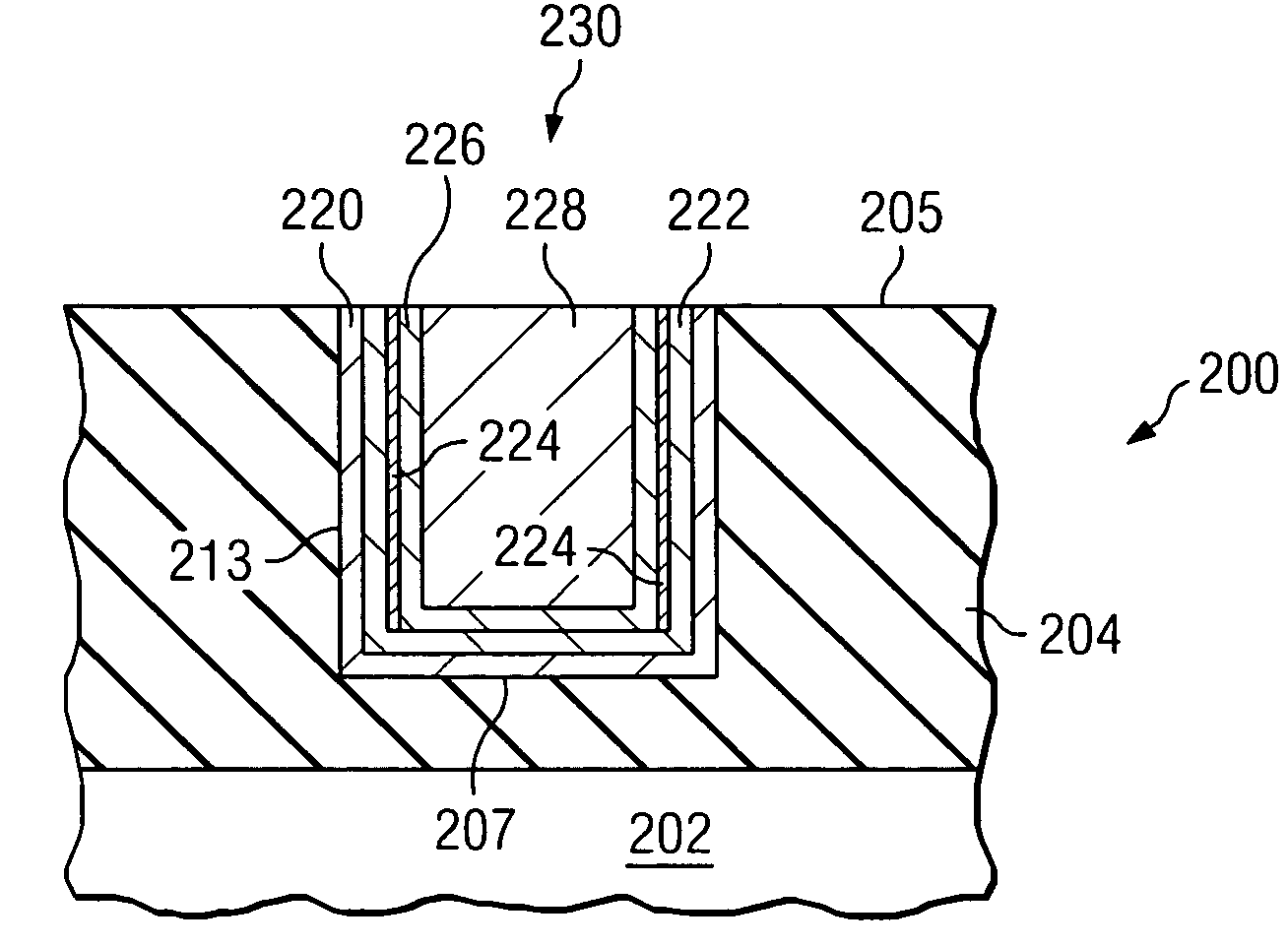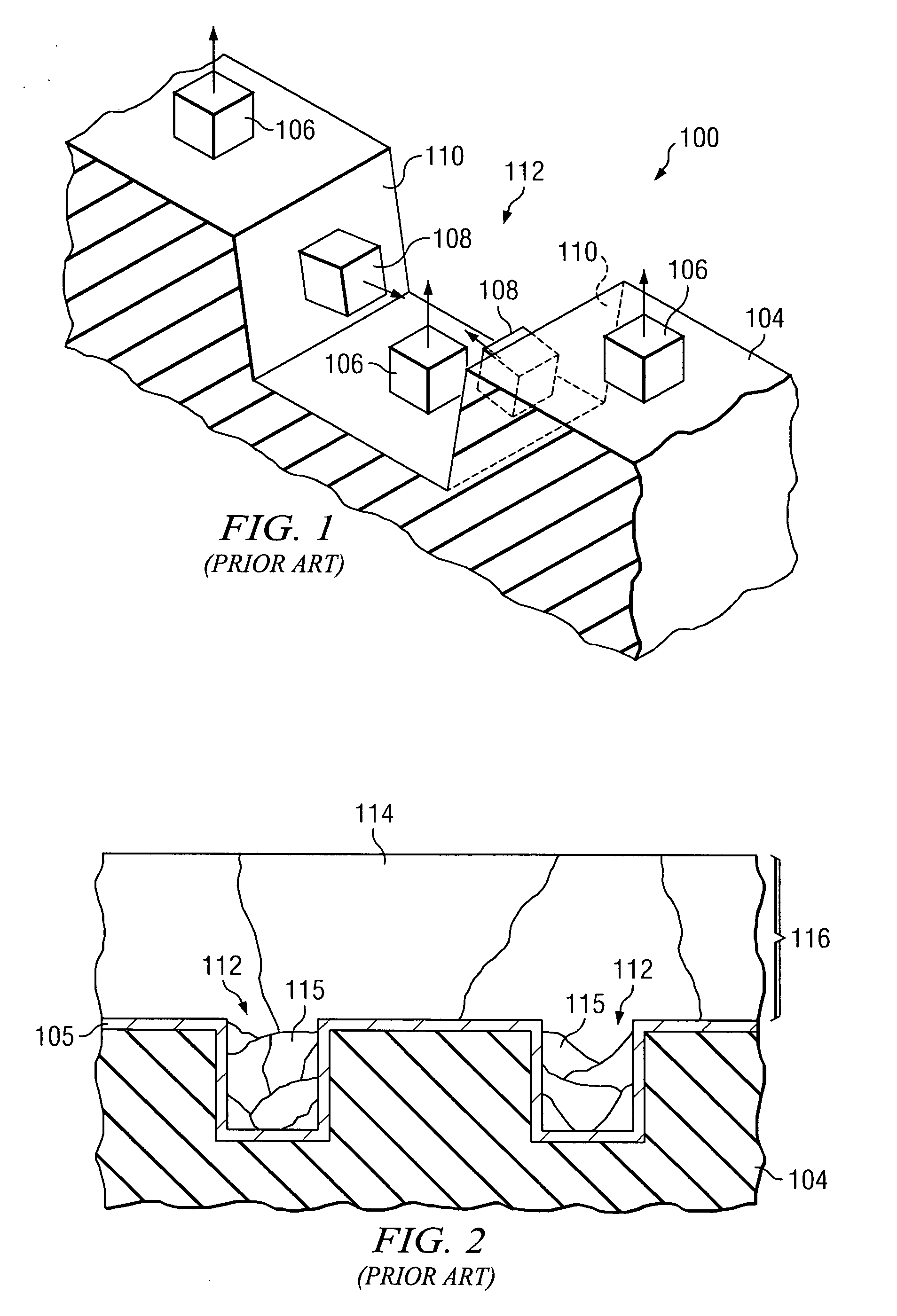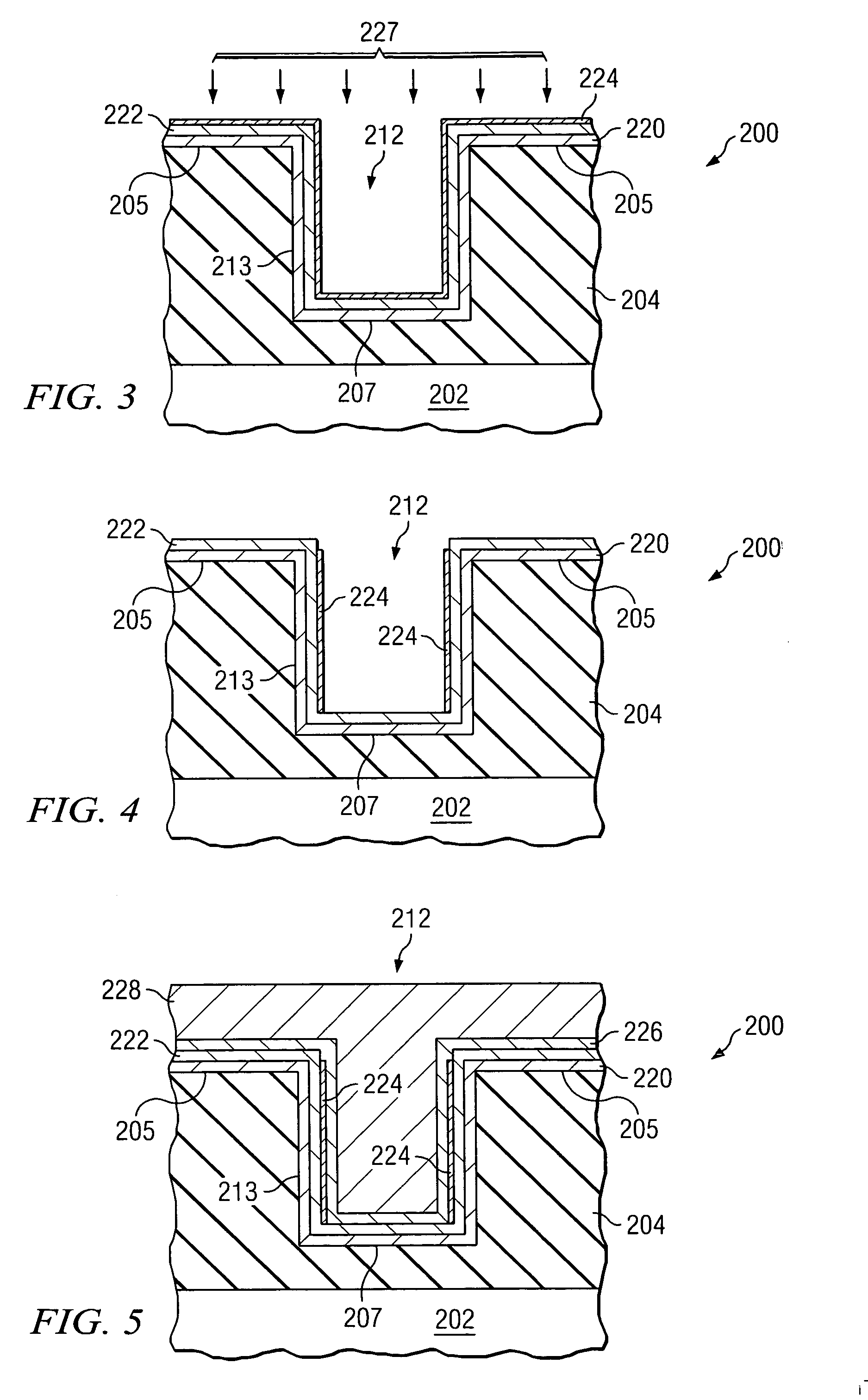Barrier layers for conductive features
a technology of barrier layer and conductive feature, which is applied in the direction of semiconductor/solid-state device details, thin material processing, semiconductor devices, etc., can solve the problems of time delay beginning to limit the propagation delay of integrated circuits, conductive features made from these materials have exhibited an increase in propagation delay, and the difficulty of using copper as an interconnect material, etc., to achieve low resistance and increase conductivity
- Summary
- Abstract
- Description
- Claims
- Application Information
AI Technical Summary
Benefits of technology
Problems solved by technology
Method used
Image
Examples
embodiment 300
[0044]FIG. 7 shows another embodiment 300 of the present invention. Like numerals are used in FIG. 7 as were used in the embodiment shown in FIGS. 3 through 6. In this embodiment, a highly directional layer 340 of TaN in a hexagonal phase is formed only on the trench 312 bottom surface 307 and the insulating material 304 top surface 305, but not on the sidewalls 313 of the trenches 312. The directional layer 340 of TaN may be formed only on the planar top surfaces 305 and the trench bottom surfaces 307 of the insulating material 304 by adjusting the properties of the deposition technique, for example. A relatively conformal deposition of a layer of Ta 342a / 342b is then deposited over the exposed sidewalls 313 and over the layer 340 of TaN in the hexagonal phase. The Ta nucleates as low resistive alpha Ta 342a on the top surfaces 305 and the trench bottom surfaces 307, and nucleates as a higher resistive beta Ta 342b on the sidewalls 313 of the trenches 312, as shown. Advantageously,...
embodiment 400
[0046]FIG. 8 shows another embodiment 400 of the present invention. In this embodiment, a relatively conformal layer 450 of TaN in a hexagonal phase is deposited over the trenches 412, over the top surfaces 405 and 407 and also over the sidewalls 413. Then a highly directional deposition process is used to deposit a layer 452 of alpha Ta over only the trench bottom 407 and the top surface 405 of the insulating material 404. The layer 452 is not formed over the sidewalls 413, as shown. Thus, the layer 452 of alpha Ta provides fast grain growth for the top surfaces 405 and 407, and the layer 450 of hexagonal TaN provides slow grain growth on the sidewalls 413, for the subsequently deposited conductive material (not shown in FIG. 8; see FIG. 6).
[0047] The layer 450 of TaN in a hexagonal phase preferably comprises a thickness of about 10 nm or less, and the layer 452 of Ta in an alpha phase preferably comprises a thickness of about 20 nm or less, although alternatively, the layers 450 a...
PUM
 Login to View More
Login to View More Abstract
Description
Claims
Application Information
 Login to View More
Login to View More - R&D
- Intellectual Property
- Life Sciences
- Materials
- Tech Scout
- Unparalleled Data Quality
- Higher Quality Content
- 60% Fewer Hallucinations
Browse by: Latest US Patents, China's latest patents, Technical Efficacy Thesaurus, Application Domain, Technology Topic, Popular Technical Reports.
© 2025 PatSnap. All rights reserved.Legal|Privacy policy|Modern Slavery Act Transparency Statement|Sitemap|About US| Contact US: help@patsnap.com



